
by Larry Williams | Jan 6, 2022
Q. When is citrus fruit ready to harvest?
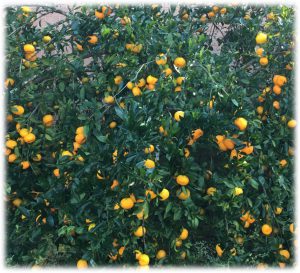
Satsuma fruit ready to harvest. Photo credit: Larry Williams
A. Florida uses five indexes to determine maturity of citrus, including soluble solids, juice content, acid level, soluble solids/acid ratio and skin color. But, the home gardener can easily decide when most citrus types are ready to be harvested. As the fruit reaches full size and the skin color changes from green to greenish yellow to orange, simply pick some fruit and taste it to see if it is sweet. If not, wait a little longer (a week or two) and taste test another fruit. Meyer lemons are ready when the skin color changes from green to greenish yellow. Satsuma fruit may be ready to eat before the skin becomes completely orange, especially if the early fall is warm. Kumquats are usually at their peak in taste when they become fully orange.
Citrus fruit does not ripen additionally after it is harvested. So, let it mature sufficiently on the tree.
Harvest season for satsuma is October to December. Harvest season for Meyer lemon is November to March. Harvest season for kumquat is November to April. Most grapefruit have a harvest season from November to May. Harvest season for sweet oranges varies. Early season oranges are harvested October to January, mid-season oranges are harvested December to February and late-season cultivars are harvested March to June. Citrus fruit may mature a little earlier in the harvest season on mature trees and more toward the end of the harvest season on young, vigorous trees.
Q. What cold-hardy citrus is best for North Florida?
A. Citrus species are tropical and subtropical in origin. As a result, citrus is not well suited for extreme North Florida. Commercial citrus production has progressively moved further south in Florida due to historic freezes. So, you’d be wise to choose the more cold-hardy citrus types for our area. But, even cold-hardy citrus can be severely injured or killed by a hard freeze in North Florida.
Some of the better choices for cold-hardy citrus in North Florida include kumquat, satsuma, calamondin and Meyer lemon. There has been some success with grapefruit and sweet oranges in our area. Lemon and lime are much less likely to survive in North Florida. There has been some discussion concerning future success with growing citrus a little more north in its current range related to climate change. There already has been some success with growing the more cold-hardy citrus types such as satsuma and kumquat in middle Georgia. We’ll see how this works out.
More information on cold-hardy citrus is available from the UF/IFAS Extension Office in your County and through this link. https://crec.ifas.ufl.edu/extension/trade_journals/2018/2018_june_coldhardy.pdf
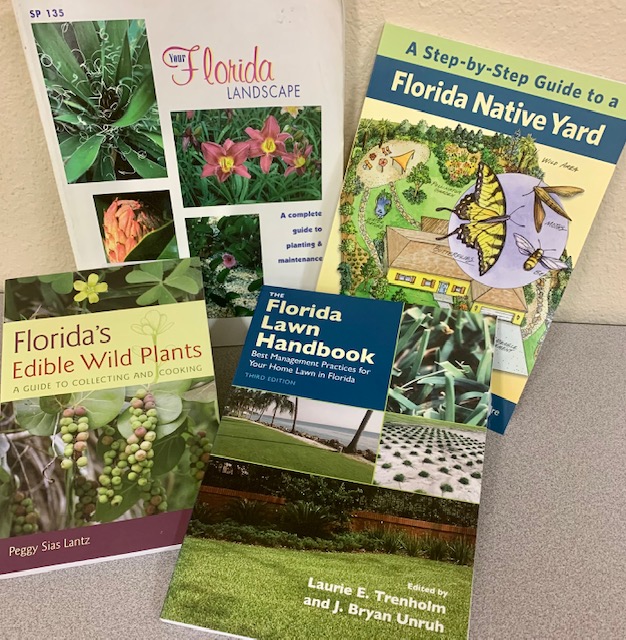
by Larry Williams | Dec 10, 2021
Christmas is on its way and it’s time to buy those gifts. If there is a gardener on your gift list, consider a gardening gift.
There are all sorts of gift ideas for a gardener and the price range varies as well.
A subscription to a garden magazine may be just the idea that your gardener will enjoy throughout the year. Look for those published in Florida or at least in the Southeast.
You might consider a horticulture book. There are many from which to choose, including those written by local authors. Check with your favorite bookstore and see if it includes a section on local writers.
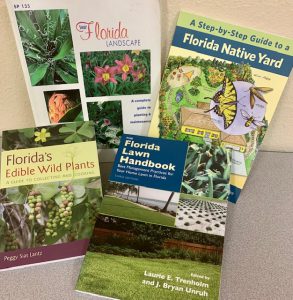
Examples of books from IFAS/Extension Bookstore. Photo credit: Larry Williams
The University of Florida’s Institute of Food and Agricultural Sciences (UF/IFAS) Extension Bookstore has numerous for sale books, posters, DVDs and more. Florida’s Edible Wild Plants is a 154-page book fully illustrated with photos and drawings to assist with identification of many of Florida’s edible plants. It includes a cookbook section with recipes and an important chapter on what not to eat. The popular Your Florida Landscape: A Complete Guide to Planting and Maintenance is a 234-page book packed full of information on landscape plants, common pests as well as beneficial insects. View and order items online at this website. http://ifasbooks.ifas.ufl.edu While there check out the section on “Books for $1,” “Logo Products” and “Pollinators & Native Plants.”
What about a gift certificate to a botanical garden such as Bellingrath Gardens or Callaway Gardens or to a local nursery/garden center?
You could make a gift basket. Be creative. Place small gardening tools such as hand pruners, a garden trowel, gardening gloves, seed packets, seed catalogs or other such items in a basket or five-gallon bucket (always handy for gardeners). Enclose with colored cellophane wrap, tie with ribbon and there you go – a nice gift.
There are more expensive items such as garden carts, benches or decorative garden art for the landscape. What about a birdhouse, bat house, birdbath or birdfeeder? You might look for a unique gift such as a mushroom kit containing everything needed to grow fresh edible mushrooms. A decorative stepping stone, outdoor thermometer, a pack of weather proof plant labels or a bug vacuum might be the gift of choice. You haven’t heard about the bug vacuum? I have one. It was a gift. It’s used to vacuum small insects off of indoor plants or to sample for insects.
Oh, and I haven’t mentioned gift plants. Your imagination is the limit when picking out a gift for a gardener. Your gift may be expensive, inexpensive, handmade, purchased from a store… I’ve been told it’s the thought that counts.
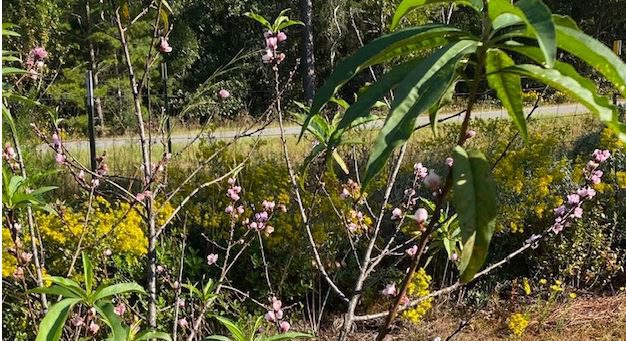
by Larry Williams | Nov 4, 2021
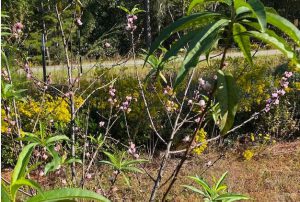
Peach tree blooming in fall. Note the yellow fall flowers of goldenrod & aster blooming in background. Photo credit: Leslie Hauquitz
Some fruit trees that normally bloom in late winter and spring are blooming now. Recently, a lady who had been out of town noticed that her peach trees were blooming when she arrived home. Knowing that peach trees ordinarily bloom around spring, she called me about this unusual occurrence. This unseasonal flowering also is occurring on some other fruit trees such as crabapple, apple and pear. This phenomenon also can occur in other deciduous spring flowering trees such as Japanese magnolia.
Anything that results in the leaves falling earlier than normal can result in this blooming out of season. Stresses that can result in the leaves falling prematurely include late season storms, insects and foliage diseases. This year’s excessive rains favored foliage diseases resulting in early leaf drop in many trees.
During most years, normal leaf drop in these trees occurs later in the season as the day length becomes shorter and when temperatures are cooler. Cooler temperatures prevent the flower buds from swelling and opening. However, if the leaves fall when the day length is longer and the temperature is warmer, the flower buds will swell and open. The leaves prevent the flower buds from developing. If the leaves fall early, during late summer or early fall, the flowers are allowed to open. With commercial apple production in some parts of the world, chemicals are applied to intentionally remove the leaves to force a second crop after harvesting the first crop of apples. This practice would not work in our area because there is not enough time to mature a second crop of fruit before cold weather arrives.
It is possible for a second crop of small fruit to develop on fruit trees that are blooming now as a result of the second flowering this year. However, because of the colder weather that will be arriving as we move into winter, any such fruit will not have time to mature. When the first killing frost or freeze occurs, these young fruits will be killed.
The lady who called about her peach trees wanted to know if she should remove the flowers and if this late flowering would negatively impact next spring’s flowering and fruit production. The flowers that opened this fall will be absent in spring – reducing the total number of flowers. However, during most springs, fruit trees produce more blooms and subsequently fruits than the trees can support. As a result, this unseasonable blooming should result in a needed thinning in next spring’s fruit crop.
So, there’s no need to remove them…just enjoy this “surprise” flower show.
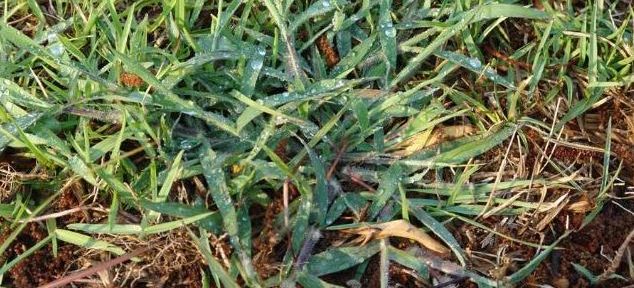
by Larry Williams | Aug 26, 2021
Hot, summer months are not the time to be using most lawn herbicides.
One issue is the heat of summer. Most lawn herbicide labels include statements such as the following.
“Do not apply when temperature exceeds 90°F.” “Do not broadcast apply this product when air temperatures are above 90°F (85°F for St. Augustinegrass) unless temporary turf injury can be tolerated.”
Every year we’ll see lawns that are injured or killed because of lawn herbicides being applied when temperatures are too hot.
Summer is usually a rainy and windy time of the year. Many lawn herbicide labels include statements such as the following.
“Allow 12 hours after application before watering lawn for maximum effectives on listed weeds.” “Apply only when wind is no more than 10 mph.” “Applying this product in calm weather when rain is not predicted for the next 24 hours will help to ensure that wind or rain does not blow or wash pesticide off the treatment area.”
It is critical to read and follow the label directions and precautions for any pesticide you use. Pesticide labels, including herbicides, include the following statements.
“To the extent consistent with applicable law, the buyer assumes all risks of use, storage, or handling of this product not in accordance with label directions.” “It is a violation of Federal law to use this product in a manner inconsistent with its labeling.”
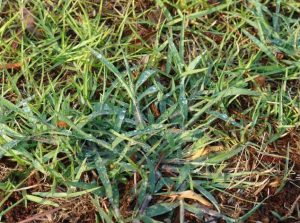
Crabgrass growing in centipedegrass lawn. Photo credit: UF/IFAS Extension
By the time summer arrives, many of the lawn weeds are mature, which means they are well established with extensive root systems. These mature, well established weeds are much more difficult to control. They are more susceptible to herbicides when they are small, young, and not well established. Also, these mature weeds have been allowed to produce countless numbers of seeds as they move into summer. Most weeds are prolific seed producers. For example, a single crabgrass plant (a common summer lawn weed) can produce 150,000 seeds.
Applying a preemergence lawn herbicide in February to help prevent summer annual weeds such as crabgrass or applying a postemergence lawn herbicide during spring while the weather is mild and before the weeds are out of control simply makes more sense than waiting until summer.
The best options now with lawn weed control involve continuing to follow good mowing practices, maybe hand removal of some weeds, and just simply waiting it out until next February and spring to worry with the use of lawn herbicides.
In the meantime, you may want to read the following UF/IFAS Extension publication on lawn weed control.
https://edis.ifas.ufl.edu/pdf/EP/EP14100.pdf
Larry Williams, UF/IFAS
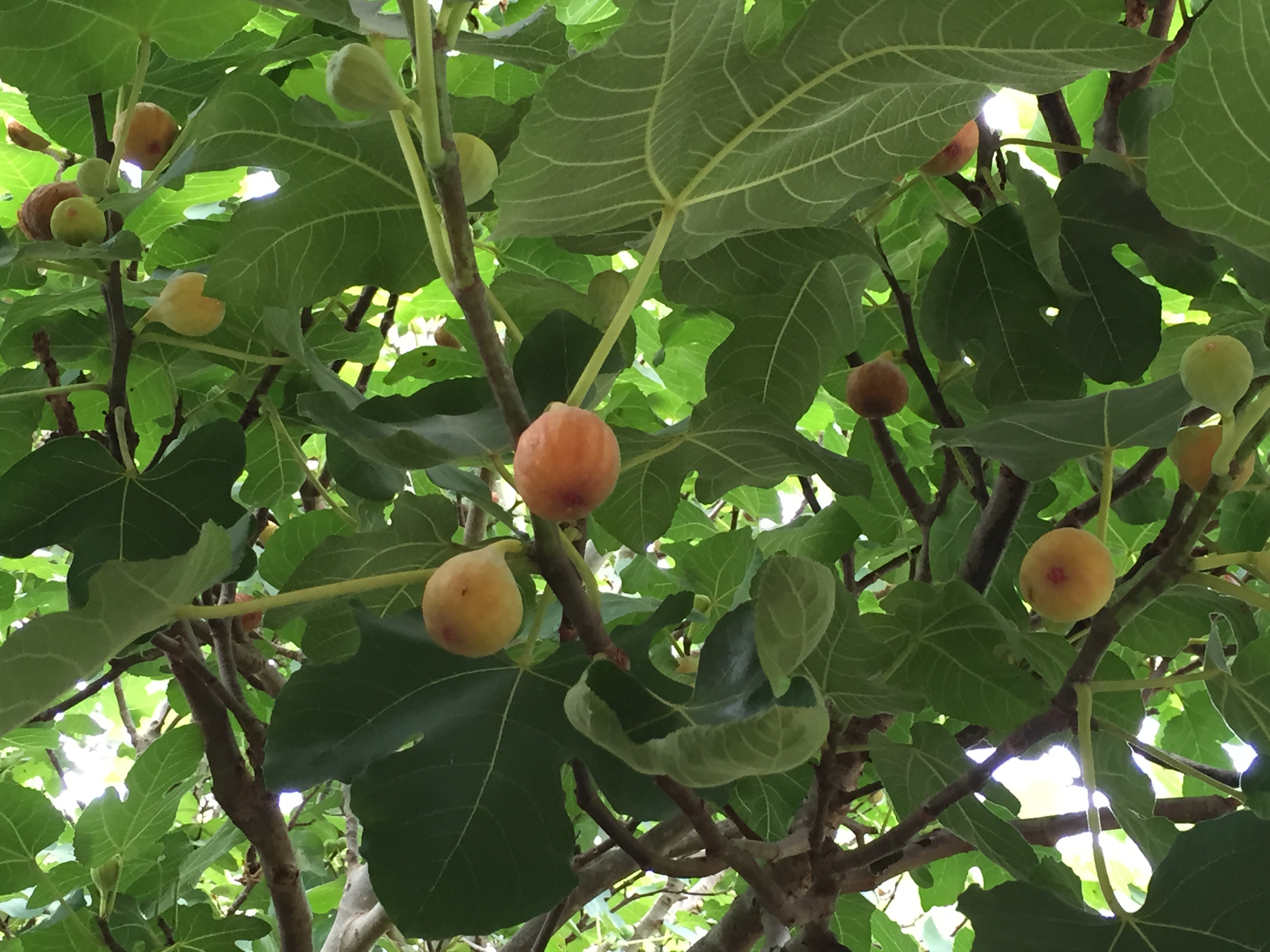
by Larry Williams | Jul 15, 2021
Q. One of my two fig trees has produced a few figs. The other one, which is the largest and healthiest tree, has never had a fig on it. Both where planted six years ago. Why is it not producing?

Mature fig tree with fruit. Photo credit: Larry Williams
A. It may be a matter of age and being overly vigorous. When a fruit tree is younger, it puts most of its energy into producing leaves and shoots. Until the plant becomes mature and slows down in the production of leaves and shoots, it will produce few to no fruit. It may take a year or two more for your tree to slowly and gradually switch from producing mostly leaves and shoots to producing and maturing some fruit. Patience is needed.
Be careful to not overdo it in fertilizing and/or pruning your fig tree. Too much fertilizer, especially nitrogen, or severely pruning the tree will result in the tree becoming overly vigorous at the expense of setting and maturing fruit. This includes fertilizer that the tree may pull up from a nearby lawn area. A tree’s roots will grow outward two to three times beyond its branch spread into adjacent lawn areas.
The end result of being heavy handed with fertilizing and/or overdoing it in pruning is the same – it forces the plant to become overly vigorous in producing leaves and shoots at the expense of producing and maturing fruit.
In addition, the following is taken from an Extension publication on figs and includes the most common reasons for lack of fruiting, in order of importance.
- Young, vigorous plants and over-fertilized plants will often produce fruit that drops off before maturing. If plants are excessively vigorous, stop fertilizing them. Quite often, three of four years may pass before the plant matures a crop because figs have a long juvenile period before producing edible quality fruit.
- Dry, hot periods that occur before ripening can cause poor fruit quality. If this is the case, mulching and supplemental watering during dry spells will reduce the problem.
- The variety Celeste will often drop fruit prematurely in hot weather regardless of the quality of plant care. However, it is still a good variety to grow.
- An infestation of root-knot nematodes can intensify the problem when conditions are as described in item 2.
- You could have a fig tree that requires cross-pollination by a special wasp. This is a rare problem. If this is the case, then it will never set a good crop. The best way to resolve this is to replace the plant with a rooted shoot of a neighbor’s plant you know produces a good crop each year.










